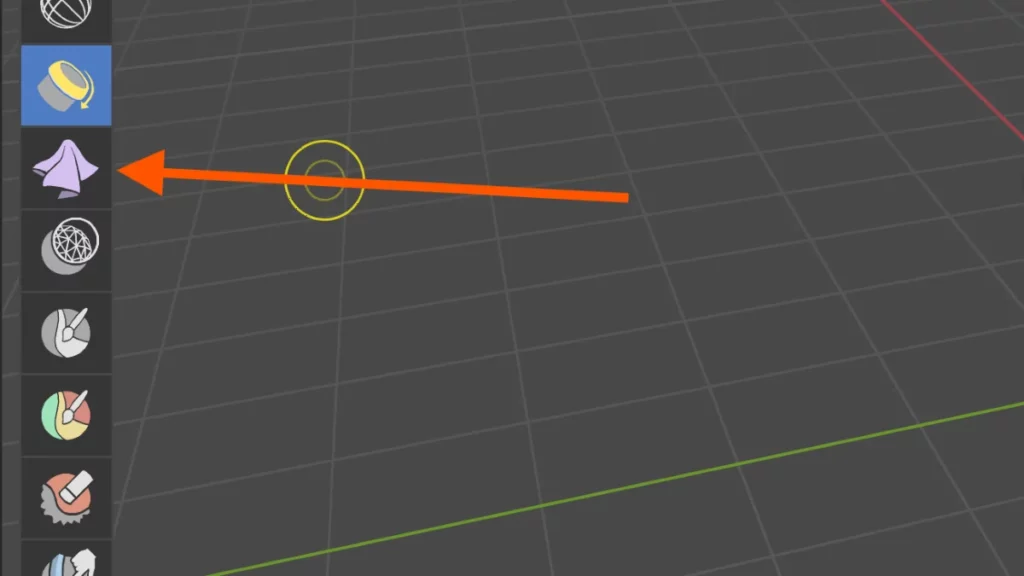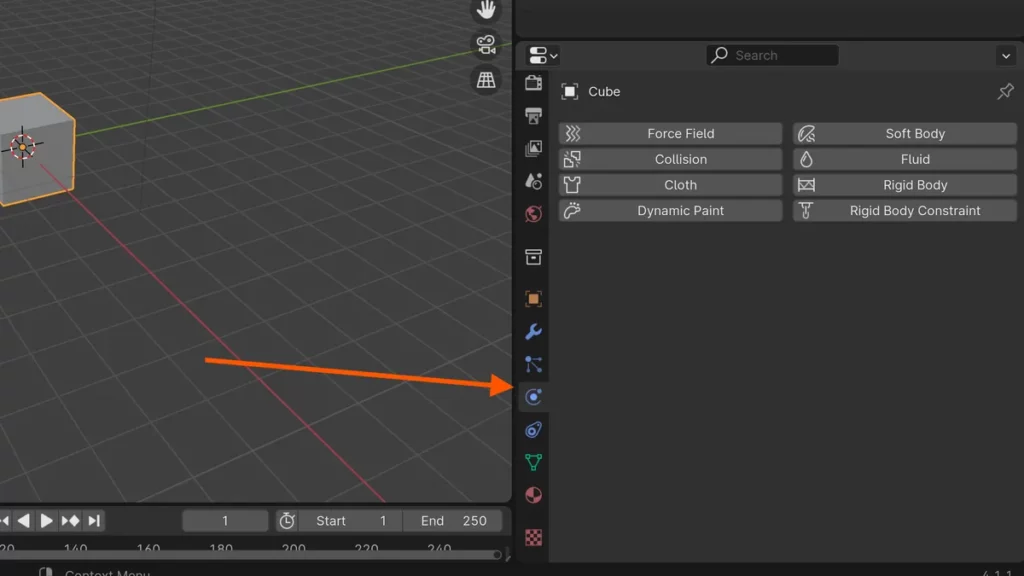The evolution of 3D modeling now encompasses Sculpting with Physics Simulations: Cloth & Soft Bodies. These techniques are revolutionizing how digital artists create and animate lifelike textiles and malleable materials. By leveraging physics engines, artists achieve exceptional realism in the behavior and appearance of organic and soft structures in virtual environments.
Realistic Cloth & Soft Body Sculpting with Physics is a digital art revolution. These tools empower artists to mimic real-world physics, adding lifelike credibility to virtual fabrics and flexible materials. Harnessing this technology enhances visual storytelling and character design.
A common challenge in this discipline is the complexity of simulating realistic interactions between soft body dynamics and environmental factors. This difficulty paves the way to The Basics of Cloth and Soft Body Sculpting, where understanding foundational principles is critical to mastering these advanced digital sculpting techniques.
The Basics of Cloth and Soft Body Sculpting
When it comes to creating realistic cloth and soft body effects in digital sculpting, understanding how physics play a role is crucial. Cloth and soft bodies have unique behaviors that can be simulated through physics engines in sculpting software. This section will cover the basics of how to create realistic cloth and soft body effects using physics in your sculpting projects.
1. Cloth Sculpting
Cloth sculpting involves creating the wrinkles, folds, and draping of fabric in a realistic manner. To achieve this, sculptors can use physics simulations to simulate the way cloth interacts with gravity, wind, and other forces. By adjusting parameters such as stiffness, thickness, and friction, sculptors can create various types of fabric effects.

2. Soft Body Sculpting
Soft body sculpting involves creating objects that deform and react like soft, pliable materials such as rubber or jelly. Sculptors can use physics simulations to simulate the way soft bodies deform, bounce, and stretch. By adjusting parameters such as elasticity, damping, and mass, sculptors can create realistic soft body effects.
3. Using Physics Simulations
In sculpting software, physics simulations can be applied to cloth and soft bodies by adding physics modifiers to the sculpted objects. These modifiers allow sculptors to define the physical properties of the object and control how it interacts with external forces. By running simulations, sculptors can preview how the cloth or soft body will behave in different scenarios.
4. Refining Details
While physics simulations can provide a good starting point for creating realistic cloth and soft body effects, sculptors may need to further sculpt and refine the details manually. This involves adjusting the sculpted geometry, adding additional wrinkles or folds, and fine-tuning the overall appearance of the cloth or soft body.
By mastering the basics of cloth and soft body sculpting with physics, sculptors can create highly realistic and dynamic effects in their digital sculpting projects. Experimenting with different parameters and techniques will allow sculptors to achieve a wide range of cloth and soft body effects to enhance their sculpting creations.
Integrating Physics for Realistic Sculpting Effects
Integrating physics into the sculpting process has revolutionized how artists create realistic cloth and soft body materials. The use of physics in sculpting allows for natural draping and folding that would be incredibly challenging to achieve manually. Artists can now rely on simulations to inform the behavior of materials under gravity, air resistance, and other forces.
To begin with physics in sculpting, artists must first set up the material properties of the object they are working with. In software like Blender, this involves adjusting parameters such as mass, stiffness, and damping within the Physics Properties panel. These settings dictate how the cloth or soft body will interact with the virtual environment and other objects.

The next step is to initiate the simulation. Artists can do this by pressing the Alt + A shortcut, which starts the animation and physics engine. As the simulation runs, the cloth or soft body will react in real-time, allowing the artist to observe and tweak settings as needed. This iterative process is key to achieving a high level of realism in the final sculpt.
Physics in sculpting not only saves time but also adds a layer of credibility to the artwork. Simulations account for complex interactions and provide a base that artists can refine with sculpting tools. For instance, after running a simulation, additional details can be added by using the Sculpt Mode tools to enhance folds, creases, and other characteristics that define the material’s texture and form.
This approach to sculpting, powered by physics, opens up new possibilities for artists to create dynamic, believable scenes. The next section will delve into the techniques for refining these simulations to elevate the realism of cloth and soft body materials even further.
Techniques for Realistic Cloth Simulation in Sculpting
| Step | Technique | Description |
|---|---|---|
| 1 | Start with a base mesh | Begin by creating a base mesh of the body that you want to add cloth to. This will serve as the foundation for the cloth simulation. |
| 2 | Use the Cloth Brush | In sculpting software like Blender, use the Cloth Brush to start adding folds and wrinkles to the base mesh. Adjust the settings such as stiffness, friction, and pressure to achieve the desired cloth behavior. |
| 3 | Use the Grab Brush for fine-tuning | After using the Cloth Brush, switch to the Grab Brush to further refine the cloth simulation. Use this brush to move and adjust the cloth to create more natural-looking folds and drapes. |
| 4 | Utilize Physics simulations | Some sculpting software features built-in physics simulations that can help enhance the realism of cloth. Enable these simulations to add more dynamic movement and behavior to the cloth. |
| 5 | Experiment with different fabrics | Play around with different fabric types such as silk, cotton, or leather to achieve various textures and behaviors. Adjust the settings accordingly to get the desired look and feel. |
| 6 | Add details with the Crease Brush | To add more intricate details like seams or creases, use the Crease Brush. This tool can help enhance the realism of the cloth simulation and make it look more authentic. |
| 7 | Use reference images | When sculpting cloth, refer to images of real fabric drapery to understand how different fabrics behave and fold. This will help you create a more accurate and realistic cloth simulation in your sculpting project. |
Understanding Soft Body Dynamics in Digital Sculpting
Soft body dynamics for sculpting are essential for artists aiming to create believable cloth and flesh in digital environments. These dynamics allow the simulation of materials that can stretch, bend, and fold in a life-like manner. By understanding and applying soft body dynamics for sculpting, artists can add a new level of realism to their creations.
To start, artists must familiarize themselves with the physics settings in their chosen software. These settings control how the simulated material interacts with forces such as gravity and collisions. Proper adjustment of these parameters ensures that the cloth or flesh behaves as expected in the digital world.
Next, incorporating real-world references into the sculpting process can significantly enhance the authenticity of the material behavior. Observing how fabric drapes over an object or how skin moves and folds can inform the settings for the soft body simulation. This attention to detail is what separates good from great digital sculptures.
Moreover, artists should not shy away from experimentation. Playing with different values in the physics engine may lead to more natural-looking movements. Remember, to merge objects, use Ctrl + J. To find these settings, go to the Object menu and locate the soft body tools.
As artists refine their soft body dynamics for sculpting, they will discover the balance between computational demand and visual fidelity. It’s a delicate balance, but when achieved, the results are stunningly realistic. These simulations can breathe life into a static scene, making the viewer forget they are looking at a digital creation.
With the basics of soft body dynamics mastered, artists can move on to mastering the art of animation, bringing their sculptures to life with movement that flows naturally and convincingly.
Selecting Sculpting Tools for Soft Bodies and Cloth
Selecting the right sculpting tools for soft bodies is crucial in rendering realistic cloth and soft body simulations. Artists must consider the toolset that allows for intricate control over cloth behavior. Advanced sculpting software provides features like pressure sensitivity and dynamic topology for finesse in soft body detailing.
To sculpt soft bodies effectively, artists often use the Grab, Smooth, and Pinch brushes. These brushes manipulate the virtual fabric in ways that mimic the stretching and compression of real-world materials. For example, the Grab tool allows you to pull and drape the cloth, while the Smooth tool helps in reducing any unwanted puckering or creasing.
Physics plays a pivotal role in soft body sculpting as it adds believability. Tools that integrate physics simulations enable the cloth to interact with environmental factors, such as gravity and collisions. This is where settings like mass, stiffness, and damping come into play. Artists adjust these variables to reflect how the cloth should behave under certain conditions.
By leveraging sculpting tools for soft bodies, artists bring fabrics to life with natural-looking folds and wrinkles. These tools often include features to fine-tune the cloth’s properties, ensuring that it drapes or stretches as expected. For fastening the cloth to a static point, use the Pin function, typically activated by hitting the Ctrl + T shortcut.
As you proceed to the next section on Simulation and Animation Techniques, remember that mastering sculpting tools for soft bodies sets the foundation. With these tools, you’ll craft textiles that behave realistically under the laws of physics in your digital creations.
How to Achieve Ultimate Realism in Cloth Sculpting
Achieving realism in cloth sculpting is a delicate balance of artistry and technology. Artists must understand the properties of fabric and how they interact with forces such as gravity, tension, and compression. To start, select a high-quality mesh that closely mirrors the complexity of real fabric, ensuring it has enough subdivisions to bend and fold naturally.
The use of physics simulations plays a pivotal role in achieving realism in cloth sculpting. Integrate a cloth simulation engine within your software to allow for natural draping and movement. In Blender, for instance, you can activate cloth physics by going to the Physics tab and selecting Cloth from the list of available physics types.
Tweaking the various parameters of the cloth simulation is key to realistic behaviour. Adjust factors like stiffness, damping, and mass according to the type of fabric you’re simulating. For silkier materials, lower stiffness and higher damping often yield more realistic results. Use Ctrl + E to access the cloth’s edge properties, where you can refine the leading edges of your fabric to achieve that perfect fall or flutter.
Incorporate environmental and object interactions to add another layer of believability to your cloth sculpture. Collisions with other objects and forces like wind can be simulated to affect the cloth’s behaviour. To fine-tune how the fabric interacts with objects, go to the Collisions settings under the Cloth tab and adjust the distance and damping values. Remember, subtle interactions can make a huge difference, so observe how fabrics behave in the real world and try to replicate those nuances in your simulation.
BEGIN LEARNING AND DEVELOPING WITH OUR BLENDER VIDEO SCHOOL!!
Check out our course library if you are looking for a systematic and effective way to improve your skills as a 3D artist. Click Here To Learn Blender The Right Way!